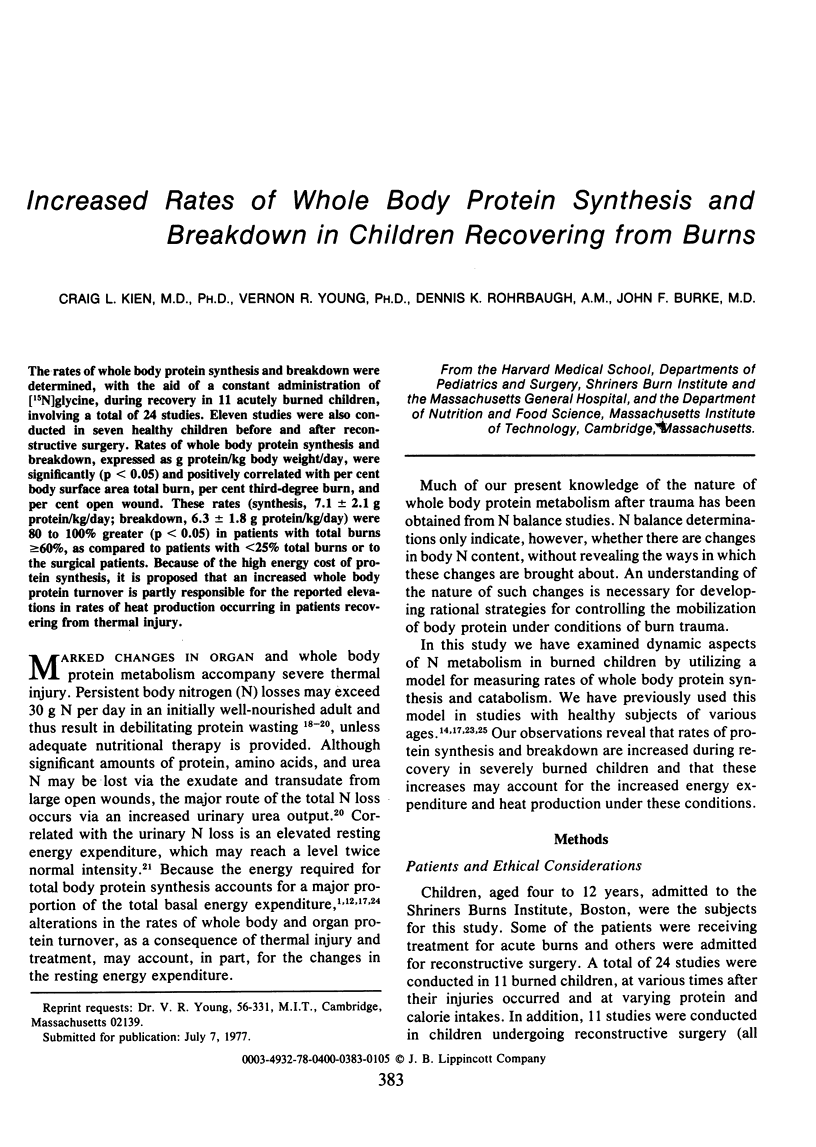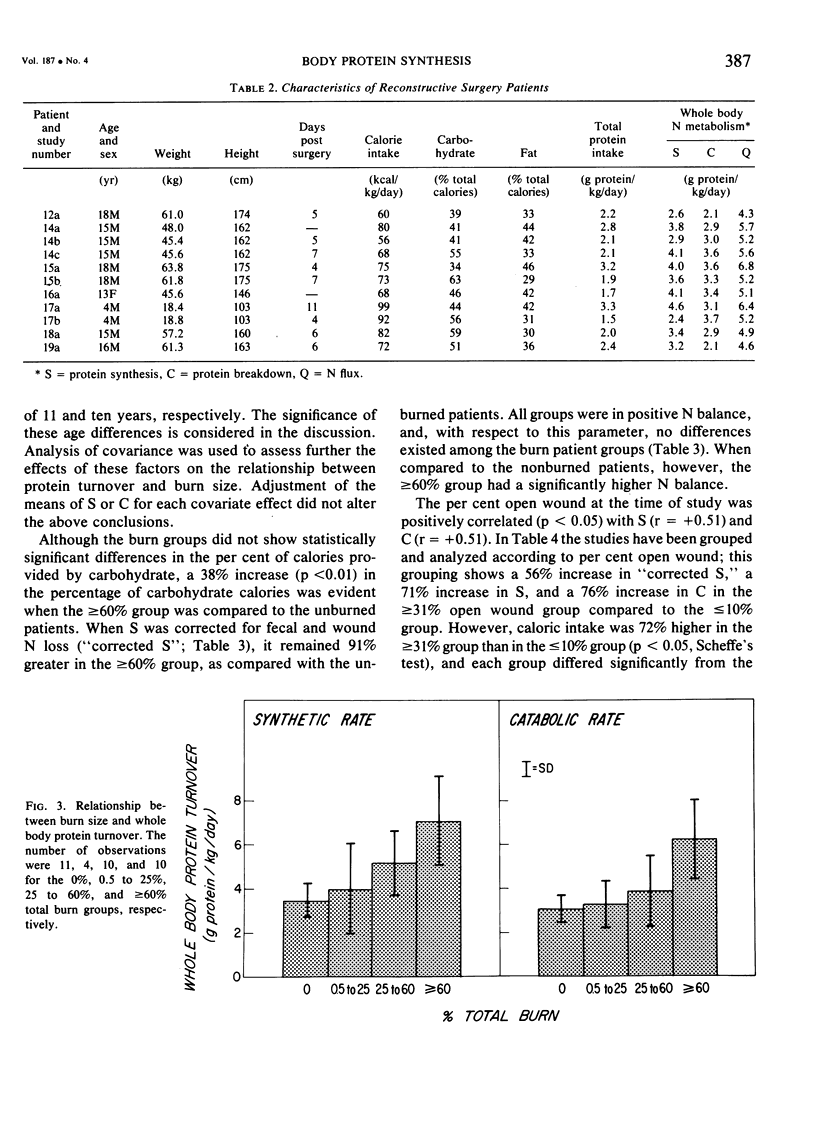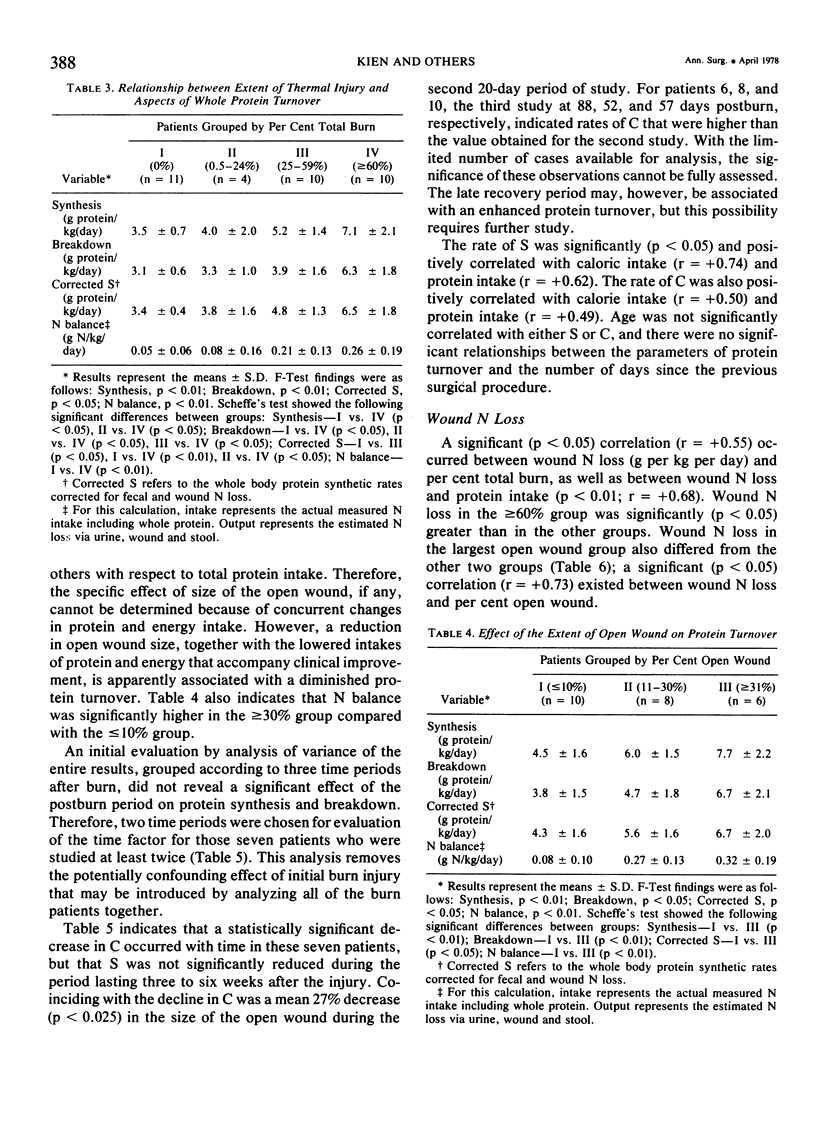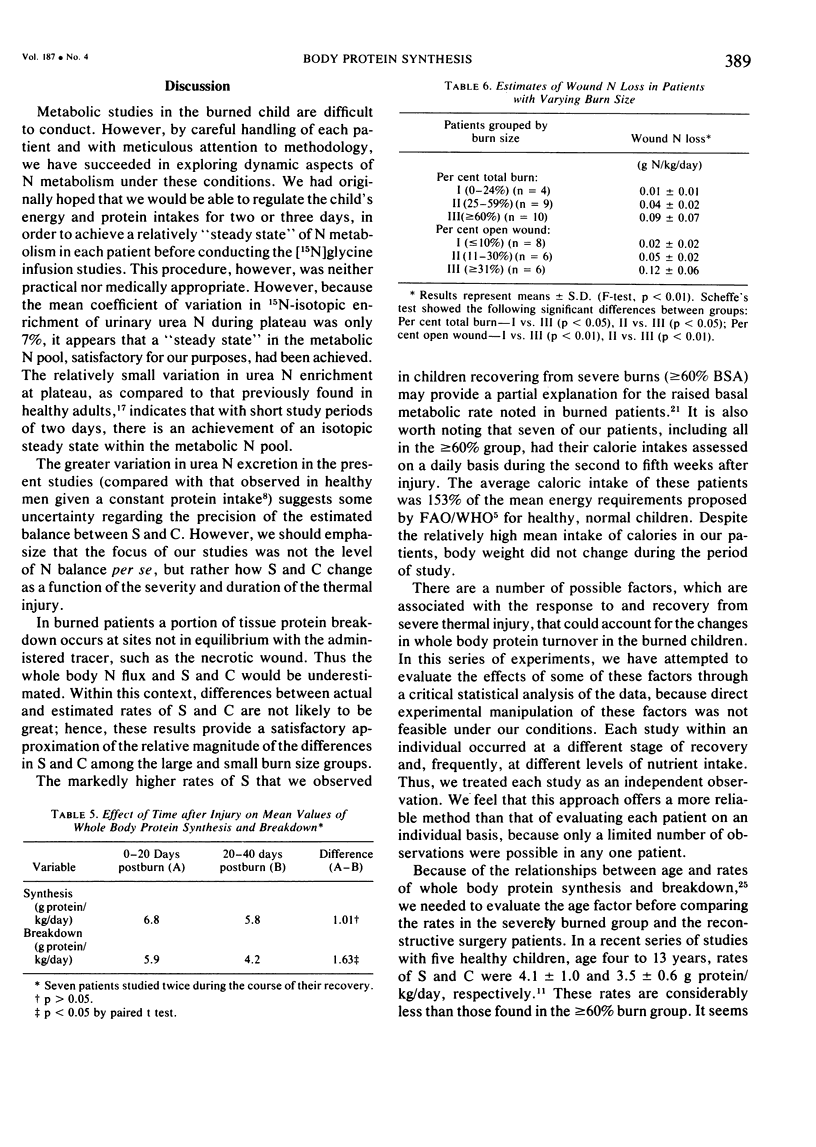Abstract
The rates of whole body protein synthesis and breakdown were determined, with the aid of a constant administration of [15N]glycine, during recovery in 11 acutely burned children, involving a total of 24 studies. Eleven studies were also conducted in seven healthy children before and after reconstructive surgery. Rates of whole body protein synthesis and breakdown, expressed as g protein/kg body weight/day, were significantly (p less than 0.05) and positiviely correlated with per cent body surface area total burn, per cent third-degree burn, and per cent open wound. These rates (synthesis, 7.1 +/- 2.1 g protein/kg/day; breakdown, 6.3 +/- 1.8 g protein/kg/day) were 80 to 100% greater (p less than 0.05) in patients with total burns greater than or equal to 60%, as compared to patients with less than 25% total burns or to the surgical patients. Because of the high energy cost of protein synthesis, it is proposed that an increased whole body protein turnover is partly responsible for the reported elevations in rates of heat production occurring in patients recovering from thermal injury.
Full text
PDF








Selected References
These references are in PubMed. This may not be the complete list of references from this article.
- Blaxter K. L. Methods of measuring the energy metabolism of animals and interpretation of results obtained. Fed Proc. 1971 Jul-Aug;30(4):1436–1443. [PubMed] [Google Scholar]
- Brooke O. G., Ashworth A. The influence of malnutrition on the postprandial metabolic rate and respiratory quotient. Br J Nutr. 1972 Mar;27(2):407–415. doi: 10.1079/bjn19720106. [DOI] [PubMed] [Google Scholar]
- Himms-Hagen J. Cellular thermogenesis. Annu Rev Physiol. 1976;38:315–351. doi: 10.1146/annurev.ph.38.030176.001531. [DOI] [PubMed] [Google Scholar]
- MONTGOMERY R. D. Changes in the basal metabolic rate of the malnourished infant and their relation to body composition. J Clin Invest. 1962 Aug;41:1653–1663. doi: 10.1172/JCI104622. [DOI] [PMC free article] [PubMed] [Google Scholar]
- Milligan L. P. Energetic efficiency and metabolic transformations. Fed Proc. 1971 Jul-Aug;30(4):1454–1458. [PubMed] [Google Scholar]
- Pencharz P. B., Steffee W. P., Cochran W., Scrimshaw N. S., Rand W. M., Young V. R. Protein metabolism in human neonates: nitrogen-balance studies, estimated obligatory losses of nitrogen and whole-body turnover of nitrogen. Clin Sci Mol Med. 1977 May;52(5):485–498. doi: 10.1042/cs0520485. [DOI] [PubMed] [Google Scholar]
- Picou D., Taylor-Roberts T. The measurement of total protein synthesis and catabolism and nitrogen turnover in infants in different nutritional states and receiving different amounts of dietary protein. Clin Sci. 1969 Apr;36(2):283–296. [PubMed] [Google Scholar]
- Steffee W. P., Goldsmith R. S., Pencharz P. B., Scrimshaw N. S., Young V. R. Dietary protein intake and dynamic aspects of whole body nitrogen metabolism in adult humans. Metabolism. 1976 Mar;25(3):281–297. doi: 10.1016/0026-0495(76)90086-x. [DOI] [PubMed] [Google Scholar]
- Wilmore D. W., Long J. M., Mason A. D., Jr, Skreen R. W., Pruitt B. A., Jr Catecholamines: mediator of the hypermetabolic response to thermal injury. Ann Surg. 1974 Oct;180(4):653–669. doi: 10.1097/00000658-197410000-00031. [DOI] [PMC free article] [PubMed] [Google Scholar]
- Wilmore D. W. Nutrition and metabolism following thermal injury. Clin Plast Surg. 1974 Oct;1(4):603–619. [PubMed] [Google Scholar]
- Winterer J. C., Steffee W. P., Davy W., Perera A., Uauy R., Scrimshaw N. S., Young V. R. Whole body protein turnover in aging man. Exp Gerontol. 1976;11(3-4):79–87. doi: 10.1016/0531-5565(76)90017-6. [DOI] [PubMed] [Google Scholar]
- Young V. R. Energy metabolism and requirements in the cancer patient. Cancer Res. 1977 Jul;37(7 Pt 2):2336–2347. [PubMed] [Google Scholar]
- Young V. R., Steffee W. P., Pencharz P. B., Winterer J. C., Scrimshaw N. S. Total human body protein synthesis in relation to protein requirements at various ages. Nature. 1975 Jan 17;253(5488):192–194. doi: 10.1038/253192a0. [DOI] [PubMed] [Google Scholar]
- Young V. R., Taylor Y. S., Rand W. M., Scrimshaw N. S. Protein requirements of man: efficiency of egg protein utilization at maintenance and submaintenance levels in young men. J Nutr. 1973 Aug;103(8):1164–1174. doi: 10.1093/jn/103.8.1164. [DOI] [PubMed] [Google Scholar]


